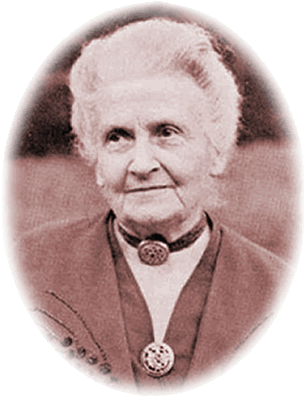
|
Establishing lasting peace is the work of education; all politics can do is keep us out of war. "The hands are the instruments of mans intelligence . He constructs his mind step by step till it becomes possessed of memory, the power to understand, the ability to think." - Dr. Maria Montessori |
| Montessori and Her Method |
|
Dr Maria Montessori (1870-1952) began her work in education at the turn of the century and went on to dedicate her life to the cause of the child. In 1907, she started the first Children's House in Italy. After extensive observation and work with children, she came to understand how they learn best. She believed that education begins at birth and that the first six years of life, being the most formative, are the more important both physically and mentally. It is during this time that a childs powers of absorption are highest and attitudes and patterns of learning that will last for life are formed. Dr Montessori went on to expand her ideas into a fully articulated education program. Montessori ApproachDr Montessori believed that children have an innate positive attitude towards learning. She once said, "I don't need to teach anything to children: it is they who, placed in a favorable environment, teach me." In a Montessori classroom there is a special atmosphere of cheerful orderliness, calmness and purposeful work. The Montessori approach is child-centered, but adult guided. It is structured, but free for learning and emphasizes basics in an enjoyable way. Mutual respect between adult and child is paramount. The Montessori method aims to develop each childs:
The Montessori environment provides the young child with specifically designed activities and materials appropriate for growth and development. Dr. Montessori discovered that children of this age have an especially keen sensitivity to many areas of learning and development. These sensitive periods, as she called them, start to fade just as many educational programs are preparing to start their work with the child.
|
© All Rights Reserved Cornerstone Montessori Children's House 2010. (TMS,inc.)
